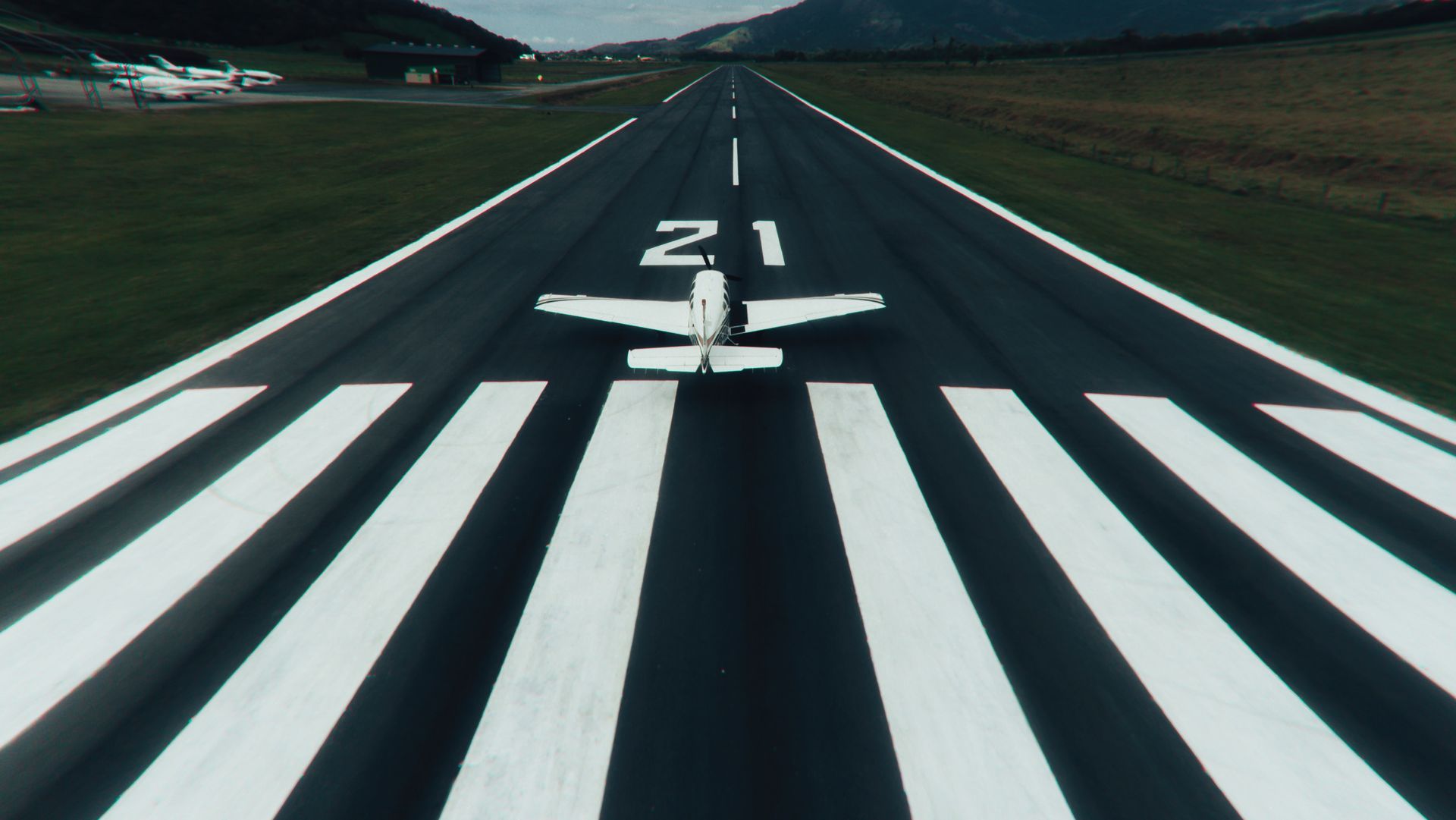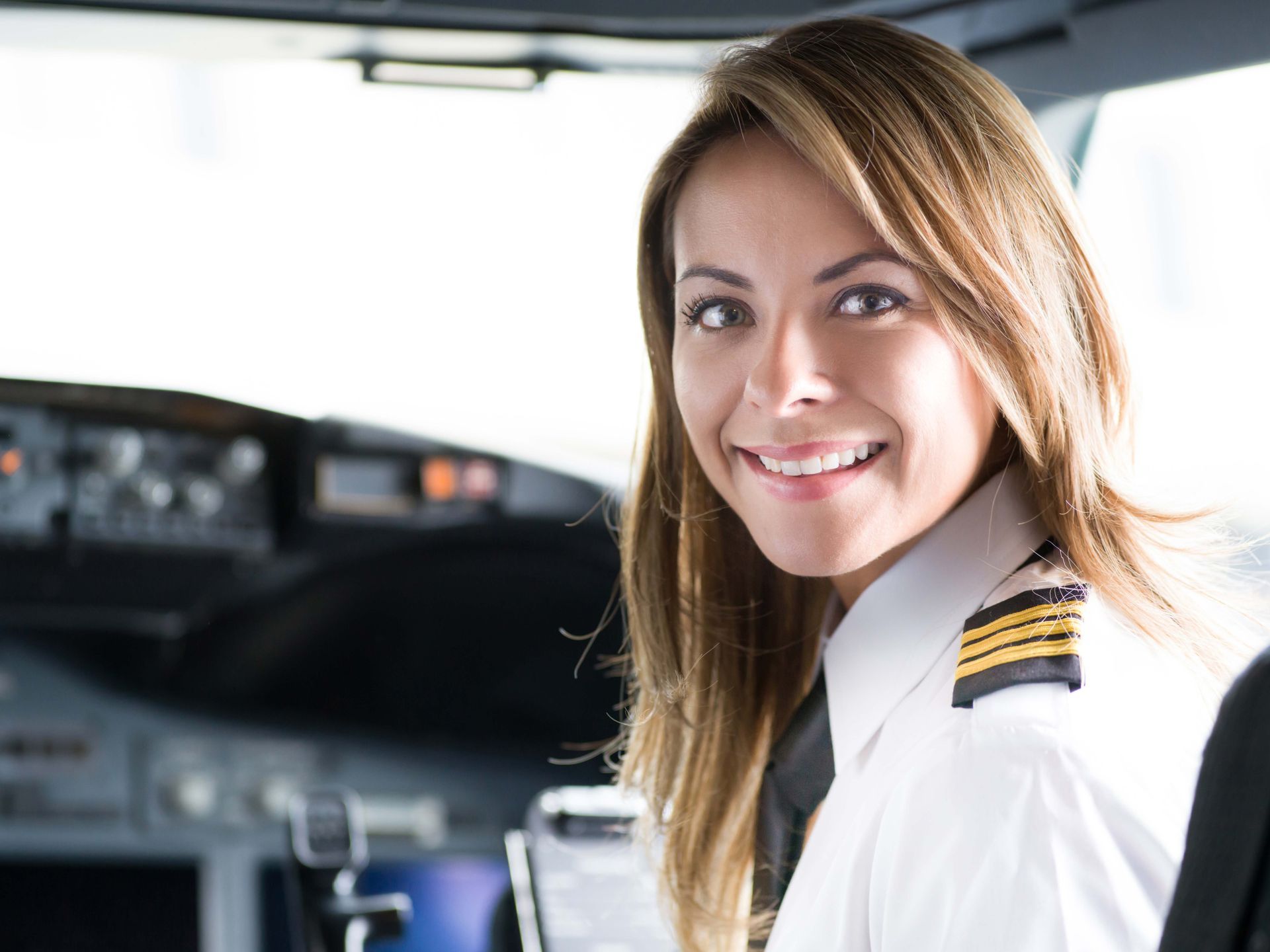8 HOW-TOs for New-Hire Airline Pilot Training – Part 2
Captain Jenny Beatty • May 17, 2021
How to get through your first new-hire airline pilot training course

CONTINUED FROM PART 1 -- CLICK HERE FOR HOW-TOs #1 - 4
#5 HOW TO USE STUDY AIDS
- Study guide: Beware of a generic study guide that covers various models and configurations of an aircraft type. You don’t want to waste time learning and UN-learning useless information. More useful is a study guide written specifically for your airline and aircraft model and configuration. Be sure to check the date it was last updated, and verify the accuracy of procedures and limitations that may have changed since that date.
- Flashcards: I strongly suggest that you make your own flashcards by hand. Buy a big bunch of blank index cards and some Sharpie pens, and colored markers if you’re into that. Why not just buy flashcards that someone else made, or use a flashcard app? Because you will learn more and remember more by making your own. You will have to hear or see the factoid that needs to be learned, and recognize it as such. You will have to phrase the factoid as a question and an answer. You will have to write it out — and the act of writing is a boon to learning. This process for making the flashcard reinforces the information on it. You will use these flashcards for future recurrent training sessions, too. Categories suitable for flashcards: Limitations (AOM), Memory Items and Callouts (QRH and AOM), functions of each system, switch, and indicator light (AOM and Aircraft Systems Manual), operational data on winds, visibility, landing minima (COM and AOM), and performance data.
- CBT, EFB, or laptop: If your company provides Flight Management System (FMS) training or flight simulator software, be sure to spend time practicing with it.
- Training syllabus: Use the syllabus to pace yourself and direct your studies. If you know the next ground school subject or sim session will focus on hydraulic malfunctions, review that section of the Systems manual and those checklist procedures in the QRH the night before.
- Mock Cockpit: Build a mock cockpit or “paper tiger” in your hotel room or shared crew room, using chairs and a box for the center console, with cockpit layouts, posters, or “slicks” taped to the wall and onto the box. If the airline doesn’t provide these, blow up the cockpit diagrams from your manual at a copy shop.The main point is to assemble as close a facsimile of your new cockpit as possible. Sit in your seat and familiarize yourself with your new “office" by sitting in the mock cockpit every day, practicing your flows. The flows must be completed by memory and the better you know them, the better your sim training will go. Repetition, repetition, repetition.
#6 HOW TO PASS COMPUTER TESTS
- RTFQ!!!
- Keep your hand off the mouse. You don’t want to accidentally click Enter to answer a question before you’re ready.
- Open book test: There won’t be time to look up every answer in the manuals. However, if the question pertains to a malfunctioning system, look it up in the QRH, just as you would in flight.
- Multiple choice questions: You might be able to eliminate one or two incorrect answers right away. Keep an eye out for “Both B and C are correct” and “All of the above”.
- Wrong answers: If you get one wrong, review the question and the correct answer before moving on, because there might be a follow-on question on the same scenario or topic.
#7 HOW TO FLY THE SIMULATOR
- Armchair flying: You can do this in your mock cockpit, or sitting in any chair withyour eyes closed. Visualize flying your profiles in real time, doing flows, pointing to the appropriate switches, and making the callouts. Practice flying as both pilot and non-flying pilot, daily. Get to a level where you feel comfortable with checklist use, callouts, profiles, and procedures.
- Practice emergencies: In your mock cockpit or armchair, have your training partner throw some engine failures and mechanicals problems at you, and work each problem as a crew all the way to completion of the abnormal checklist and ground evacuation. Using this process, attempt to get through every abnormal and emergency situation and checklist in the QRH. Having done this, there will be no surprises ahead, as you will have familiarized yourself with the cockpit layout and virtually touched nearly every switch, button, lever, and handle in the airplane. This will also solidify your systems knowledge.
- Flight Training Device: Before reaching the FTD phase, you should have Limitations, Memory Items, Callouts, Flows, and verbatim Checklist responses down cold. The FTD and FMS are to practice, refine your profiles and flows, and serve as a phase check to ensure you’re ready for training in the full-motion simulator.
- Seat adjustment: At your first sim session, have the instructor show you how to adjust your seat correctly, especially the seat height, so you can view all the instruments and reach all the switches on the flight guidance panel and overhead panel, and to give you the correct sight picture out the forward windscreen. This is extremely important; it can mean the difference between seeing the approach lights or going missed approach.
- Turn off your darned phone! All the way off! While wrestling with a V1 cut or straining to hear the “approaching minimums” alert, the last thing anyone needs is to be distracted by cellphone beeps or ringtones. If you simply must check every Instagram or Tinder message that comes in, you’ll have plenty of time for that after getting fired.
- Act like it’s real: The simulators are very realistic and it will help you to keep your head in the game if you treat the sim like the real airplane for the entire sim period. If you train in Level D sims, you will complete all training and the type ride in the sim, and the first time you fly the real airplane is on a revenue flight with a check airman.
- It’s just another airplane: This jet flies the same way your last airplane did, only faster, and the simulators replicate the jet very well. Don’t get intimidated. Learn the go-to pitch and power settings for certain configurations, and refine from there.
- Observe your sim partner: When you are Pilot Not Flying, or whenever you’re able to observe another crew in training, pay close attention to what they’re doing and what works and what doesn’t.
- Progress, not perfection: Pilots are by nature “Type A” individuals, and if perfectionism is interfering with your training, aim for “good enough”. Some pilots need to repeat difficult maneuvers or repeat a sim sessionto get the hang of it. The instructors and check airmen aren’t expecting to see perfection, but they do need to see a trend of continued improvement and forward progress through training, in order to justify keeping you in the program. Keep working on improvement and meeting the standards.
- Bad luck: What if you end up with a training partner who is weak on skills, struggling, not progressing, and taking up more than half of each sim session? Sucks to be you! You can only help another trainee pilot so much before it is to your own detriment. Keep your mouth shut and keep doing the best you can. Let the instructors and training managers decide how to proceed. Eventually you may move forward without a partner.
- If you're struggling: Take action on your own behalf BEFORE things go on too long. Read my article Concerned about Washing Out of a Flight Training Program?
#8 HOW TO PASS THE CHECKRIDE
- Know the difference between technique and SOP and FAR. A technique is one possible way to accomplish a task, standard operating procedures should always be followed, and regulations should never be violated except in case of emergency. Until you are really proficient in this aircraft, use the suggested techniques – they are being offered for good reason.
- Drop the people-pleasing. On the flight deck you’re there to do a safety-critical job, not to be liked, so stop seeking affirmation from others. This creates a real tightrope for women pilots to walk – too “nice” and eager to please, and you’re viewed as meek and weak and not airline pilot material. Drop the gratuitous nicetiest o be “all business”, and now you’re considered an uppity, uptight, bossy bitch. Each woman pilot has to find the right balance for inspiring confidence in her abilities, without alienating instructors and coworkers. If you think it’s unfair and a double-standard that male pilots do not face this particular challenge, you’re right.
- It’s not personal. Instructors come from different sectors of aviation – active line pilots, retired pilots, pilots who lost their medicals, retired military instructors – and will have a variety of teaching methods. Most are professional and courteous, but unfortunately, some resort to yelling, name-calling, and put-downs, or are cold, abrupt, dismissive, and rude. Consider that they might intentionally be trying to intimidate you – and don’t let that happen. I suggest you let all that rolloff your back, discern the actual error and the correction in their message, and say, “Thanks for pointing that out, [sir] [ma’am]. I'll work on improving that.”
- It’s not about who’sright, it’s about what’s right. The objective of crew coordination is to work as a team, catch errors and correct them, and back each other up, in the interest of safety. If you see the other pilot making an error or deviation or doing anything that might jeopardize the safety of flight, don’t “hint and hope” – bring it to their attention using clear, direct speech and standard callouts or phraseology. And when the other pilot calls out an error or deviation, don’t take it as a personal affront or failure, they are just doing their job. Now your job is to say “Correcting” and then to correct it.
- Develop a thick skin. You’re going to make mistakes. You’re going to screw up a radio call or a complicated clearance. You’re going to plop the airplane on the runway in an undignified manner. Get used to being human; don’t make excuses; commit yourself to learning and pursuing excellence.
- Bias and harassment: If people are bugging you for sexual favors, or making denigrating remarks, or giving unbalanced performance evaluations because of your race, gender, or another attribute, please refer to the Halt Harassment in Aviation Checklist.
- Slow down! Breathe! On checkride day, be confident that your instructor had the confidence in you to sign you off. Take a deep breath and take it slow. If you beat yourself up or dwell on mistakes, it will undermine your performance. Don’t waste any mental energy self-critiquing during the checkride – only the examiner has the expertise to evaluate your performance.
- Never stop flying: The check airman or designated pilot examiner is just like the referee in a soccer match. You might see a foul or see that the ball goes out of slightly bounds, but it’s possible the ref didn’t see it or chooses not to call it – so keep playing the ball until the whistle blows! Same on your checkride: Keep catching and correcting errors, keep returning to the correct flight profile, and just keep flying until the examiner makes it clear that the scenario is over and the sim is frozen. You don’t need to point out your own errors – the instructor or examiner will do that in the debrief.
- Visualize your successful outcome. Remember how hard you’ve worked to reach this point, how much you’ve learned, and have faith that your efforts will bear fruit. Visualize yourself in your new job, flying the jet on a beautiful blue-sky day.
A huge "thank you!" to my study buddies who guided me in my first airline pilot course, and to my sister pilots in the Pro 99s Network and the 99s Professional Pilot Leadership Initiative who contributed many of the suggestions encapsulated here.
May your dreams take flight!
© 2021 Jenny Beatty. All Rights Reserved.
Photo credit: Embraer S.A.









